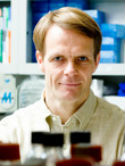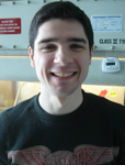Impaired intrinsic immunity to HSV-1 in human iPSC-derived TLR3-deficient CNS cells Journal Article
| Authors: | Lafaille, F. G.; Pessach, I. M.; Zhang, S. Y.; Ciancanelli, M. J.; Herman, M.; Abhyankar, A.; Ying, S. W.; Keros, S.; Goldstein, P. A.; Mostoslavsky, G.; Ordovas-Montanes, J.; Jouanguy, E.; Plancoulaine, S.; Tu, E.; Elkabetz, Y.; Al-Muhsen, S.; Tardieu, M.; Schlaeger, T. M.; Daley, G. Q.; Abel, L.; Casanova, J. L.; Studer, L.; Notarangelo, L. D. |
| Article Title: | Impaired intrinsic immunity to HSV-1 in human iPSC-derived TLR3-deficient CNS cells |
| Abstract: | In the course of primary infection with herpes simplex virus 1 (HSV-1), children with inborn errors of toll-like receptor 3 (TLR3) immunity are prone to HSV-1 encephalitis (HSE). We tested the hypothesis that the pathogenesis of HSE involves non-haematopoietic CNS-resident cells. We derived induced pluripotent stem cells (iPSCs) from the dermal fibroblasts of TLR3-and UNC-93B-deficient patients and from controls. These iPSCs were differentiated into highly purified populations of neural stem cells (NSCs), neurons, astrocytes and oligodendrocytes. The induction of interferon-β (IFN-β) and/or IFN-λ1 in response to stimulation by the dsRNA analogue polyinosinic:polycytidylic acid (poly(I:C)) was dependent on TLR3 and UNC-93B in all cells tested. However, the induction of IFN-β and IFN-λ1 in response to HSV-1 infection was impaired selectively in UNC-93B-deficient neurons and oligodendrocytes. These cells were also much more susceptible to HSV-1 infection than control cells, whereas UNC-93B-deficient NSCs and astrocytes were not. TLR3-deficient neurons were also found to be susceptible to HSV-1 infection. The rescue of UNC-93B-and TLR3-deficient cells with the corresponding wild-type allele showed that the genetic defect was the cause of the poly(I:C) and HSV-1 phenotypes. The viral infection phenotype was rescued further by treatment with exogenous IFN-α or IFN-β (IFN-α/β) but not IFN-λ1. Thus, impaired TLR3-and UNC-93B-dependent IFN-α/β intrinsic immunity to HSV-1 in the CNS, in neurons and oligodendrocytes in particular, may underlie the pathogenesis of HSE in children with TLR3-pathway deficiencies. © 2012 Macmillan Publishers Limited. All rights reserved. |
| Keywords: | child; controlled study; human cell; pathogenesis; alpha interferon; biological markers; cytology; cells, cultured; astrocyte; protein; neural stem cell; cell differentiation; neurons; pathology; central nervous system; cell lineage; public health; polyinosinic polycytidylic acid; immunity, innate; herpesvirus 1, human; pluripotent stem cell; immunity; encephalitis; neural stem cells; nerve cell; herpes simplex virus 1; cell separation; beta interferon; neurology; induced pluripotent stem cells; double stranded rna; astrocytes; child health; virus immunity; skin fibroblast; oligodendroglia; membrane transport proteins; hypothesis testing; disease susceptibility; pathogen; human herpesvirus 1; herpes simplex encephalitis; encephalitis, herpes simplex; interferons; interleukin 29; toll like receptor 3; viral disease; toll-like receptor 3 |
| Journal Title: | Nature |
| Volume: | 491 |
| Issue: | 7426 |
| ISSN: | 0028-0836 |
| Publisher: | Nature Publishing Group |
| Date Published: | 2012-11-29 |
| Start Page: | 769 |
| End Page: | 773 |
| Language: | English |
| DOI: | 10.1038/nature11583 |
| PROVIDER: | scopus |
| PMCID: | PMC3527075 |
| PUBMED: | 23103873 |
| DOI/URL: | |
| Notes: | --- - "Cited By (since 1996): 1" - "Export Date: 2 January 2013" - "CODEN: NATUA" - "Source: Scopus" |
Altmetric
Citation Impact
BMJ Impact Analytics
Related MSK Work






